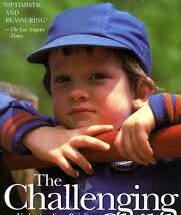
Nurturing Resilience by Michael Ungar
Introduction
Resilience is a quality that allows individuals to adapt and thrive despite adversity. In his book, Nurturing Resilience, Michael Ungar explores the various factors that contribute to resilience and provides strategies for fostering it in individuals and communities. This article delves into the key concepts and insights from Ungar's work, offering a comprehensive overview of how to nurture resilience effectively.
Understanding Resilience
Michael Ungar defines resilience not just as an individual trait but as a dynamic process that involves interactions between people and their environments. He emphasizes that resilience is about more than just bouncing back; it's about finding ways to grow and improve despite challenges.
The Seven Resilience Principles
Ungar outlines seven key principles that underpin resilience:
- Relationships: Building strong connections with others.
- Identity: Developing a positive sense of self.
- Power and Control: Having a sense of control over one's life.
- Cultural Adherence: Staying connected to cultural roots.
- Social Justice: Accessing resources and opportunities.
- Cohesion: Feeling a sense of belonging.
- Basic Needs: Ensuring safety and security.
Table 1: Seven Resilience Principles
| Principle | Description |
|---|---|
| Relationships | Building strong connections with others. |
| Identity | Developing a positive sense of self. |
| Power and Control | Having a sense of control over one's life. |
| Cultural Adherence | Staying connected to cultural roots. |
| Social Justice | Accessing resources and opportunities. |
| Cohesion | Feeling a sense of belonging. |
| Basic Needs | Ensuring safety and security. |
Building Resilience in Children
One of the key areas where Ungar's insights are particularly valuable is in child development. He emphasizes the importance of creating supportive environments for children to help them develop resilience. This includes fostering strong relationships with caregivers, providing opportunities for meaningful participation, and ensuring that children's basic needs are met.
Parental Influence
Parents play a crucial role in nurturing resilience. Ungar suggests that parents should:
- Provide consistent and loving support.
- Encourage independence and problem-solving skills.
- Model resilient behavior.
Table 2: Strategies for Parents
| Strategy | Description |
|---|---|
| Provide Support | Offer consistent and loving support to children. |
| Encourage Independence | Promote independence and problem-solving skills. |
| Model Behavior | Demonstrate resilient behavior for children to emulate. |
Community and Resilience
Ungar also highlights the role of communities in fostering resilience. Communities that provide social support, opportunities for meaningful participation, and access to resources can significantly enhance the resilience of their members.
Creating Resilient Communities
To build resilient communities, Ungar suggests:
- Encouraging social connections and networks.
- Providing access to resources and services.
- Promoting inclusive policies that support all members.
Table 3: Community Strategies
| Strategy | Description |
|---|---|
| Encourage Social Connections | Build networks and relationships within the community. |
| Provide Resources | Ensure access to necessary resources and services. |
| Promote Inclusivity | Implement policies that support all community members. |
Conclusion
Nurturing resilience is a multifaceted process that involves individual, familial, and community efforts. Michael Ungar's book provides a thorough exploration of the principles and practices that can help build resilience in various contexts. By understanding and applying these principles, we can create environments that support growth, adaptation, and thriving despite challenges.
References
For more information and resources on resilience, visit Read Review Talk and explore our blog at Read Review Talk Blog.



